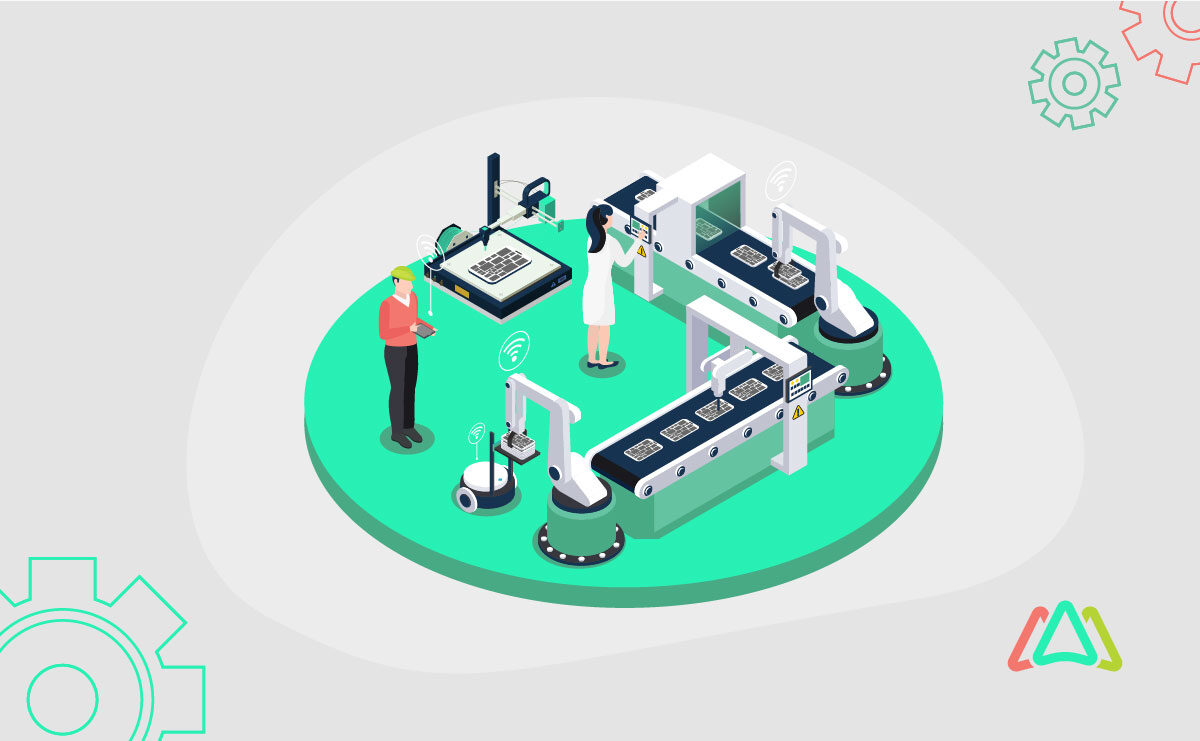
Additive Manufacturing in 2024 - Trends and Predictions for the Future
Introduction
The world of manufacturing is rapidly evolving, with Additive Manufacturing (AM) leading the charge. A technology once reserved for prototyping has now morphed into a major manufacturing method for reshaping industries. The question on everyone's mind: what’s next?
In this article, we’ll explore the exciting trends shaping Additive Manufacturing in 2024 and explore the predictions experts have for the future. Whether you're an industry insider or simply curious about how this technology is redefining production, there's a lot to look forward to. Let's explore how Additive Manufacturing continues to push boundaries, making the future of manufacturing more innovative than ever.
Additive Manufacturing Trends 2024
In 2024, 3D printing will experience wide growth driven by some factors in shaping our world. It’s also gaining adoption in industries like aerospace, automobiles, healthcare, and customer goods, offering undeniable benefits. Several trends are key factors in shaping the landscape of 3D printing; these include;
Sustainable 3D Printing
There is a growing demand for environmentally friendly products in recent times which has led to the development of sustainable and bio-based materials for 3D printing. Sustainability is a major focus in material development. Biodegradable plastics derived from plant-based sources like cornstarch have made progress in recycling plastics for 3D printing filaments. These eco-friendly materials are reducing the environmental impact of Additive Manufacturing while maintaining print quality.
Increasing Use of AI and Automation
Automation and AI are being integrated into Additive Manufacturing workflow. Robotic arms are transforming the 3D printing workflow to streamline processes, reduce labor, and improve consistency. AI is now used to optimize 3D printing, enabling it to predict and prevent print failure and even generate design integrations. The integration of AI is improving efficiency and making 3D printing smarter.
Material Innovations in 3D Printing
Old materials like plastic and metals are being refined for 3D printing to materials like metal alloys. Developing new and advanced materials is trending, making an impact in 3D printing. These alloys are made to have high strength and corrosive resistance when compared to traditional materials. Nickel-based superalloys are being used for aerospace, automotive, and medical applications. These advancements make metal 3D printing more viable for critical components in demanding industries.
Growth of 3D Printing in Healthcare
The medical line is embracing 3D printing more than before. There are available patient-specific implants that fit perfectly and promote faster healing. In dentistry, custom aligners and crowns are being produced with high precision. Bioprinting of tissues and organs is progressing, with the potential to revolutionize transplant medicine.
Advancements in Large-Scale 3D Printing
Advanced software tools and simulation techniques in Additive Manufacturing now produce larger and more complex objects in industries such as construction and transportation. Buildings are now being printed in days rather than months. Imagine a shoe sole printed with both cushioning and support elements in one go. The ability to print with multiple materials in a single build is evolving. Printers that can seamlessly switch between rigid and flexible materials are readily available. This opens up possibilities for complex parts with varying properties.
Key Predictions for the Future of 3D Printing
The versatility of Additive Manufacturing is predicted to enable its adoption in a wide range of industries. The optimizations of 3D printing would become a serious contender for large-scale industrial production. The future of 3D printing has;
Greater Adoption in Manufacturing
3D printing is expected to become even more integrated into manufacturing processes, streamlining production and reducing costs. 3D printing can reduce the need for the complex assembly of parts, thereby leading to faster production times. Manufacturers are focusing on improving the speed and efficiency of printing processes.
Expansion into Consumer Goods and Retail
To meet the increasing demand for Additive Manufacturing, Retail stores could potentially use 3D printers to produce products on demand, reducing inventory and shipping costs. 3D can also enable consumers to create personalized jewelry, custom shoes, phone cases, and dental equipment.
Cost Reduction and Increased Accessibility
New technologies like Continuous Liquid Interface Production (CLIP), metal binder jetting, and powder bed fusion with increased laser power are impressively reducing print times and will drive down costs. More affordable 3D printers and materials will make 3D printing accessible to a wide range of businesses. This can contribute to lower costs for materials and equipment for the economy.
Regulatory Changes and Industry Standards
To ensure the safety and quality of 3D-printed products, regulations will need to be established. Standards for file format and machine interference should be developed to promote compatibility and collaboration.
Future Integration with Other Technologies
The Future of 3D printing lies more in collaboration with other emerging technologies. The Internet of Things (IoT) and augmented realities aid in transforming the way we think, design, manufacture, and use 3D-printed products. 3D printing could create entirely new product categories that were previously impractical or too expensive to manufacture. The internet is connecting 3D printers to a broader manufacturing ecosystem. These factories now produce 3D printers that can communicate with other machines and systems to ensure better production planning, remote monitoring, and predictive maintenance. IoT sensors are making Additive Manufacturing more efficient and easier to use.
How Additive Manufacturing Will Shape Future Industries
Here are the possible ways Additive Manufacturing will shape the future of manufacturing:
Impact on Automotive and Aerospace
3D printing is already transforming the automotive and aerospace industries, enabling the production of lightweight, complex components. In time, 3D printing would create rapid prototypes of new designs, increasing the development cycle and reducing time to market.
Revolutionizing Healthcare and Medical Devices
Personalized medicine and creating custom implants and prosthetics would drive innovation in healthcare. Bioprinting of tissues and organs is progressing, potentially revolutionizing transplant medicine and aiding surgery training.
Driving Sustainability in Manufacturing
By reducing waste and improving material efficiency, 3D printing can contribute to a more sustainable future. 3D printing lacks local production, which, when it becomes more feasible, can reduce the need for long-distance shipping. On-demand manufacturing can also reduce inventory costs.
Enabling Mass Customization for Consumer Goods
The ability to produce customized products on demand will revolutionize the consumer goods industry. With the help of 3D printing, consumers can customize their products specifically to their unique preferences and personalized experiences.
Challenges Facing Additive Manufacturing in 2024
Despite its promising future, 3D printing isn’t without its hurdles. As industries continue to adopt Additive Manufacturing, they encounter roadblocks that slow down its widespread integration. 3D printing faces several challenges; here are the major challenges:
Supply Chain Limitations
There is a shortage of skilled labor in the handling of complex machines for 3D printing. Advancements in software and hardware monitoring systems need to be developed to catch defects during the print process. These developments are important for 3D printing future Industry standards.
Regulatory and Compliance Hurdles
Navigating complex regulations and compliance requirements can be time-consuming and costly. To ensure a wider acceptance of the use of 3D printing, certain standards for materials, processes, and testing products should be developed. These are key efforts to ensure 3D printing in some regulated industries.
Talent Shortages in Advanced Manufacturing
A lack of skilled professionals with expertise in 3D printing can hinder growth and innovation. Schools should integrate 3D printing into their curriculum to educate and bring to their awareness of students the essential role it plays in the world. These efforts to ensure 3D printing is practiced in some local business.
Conclusion
Additive Manufacturing is definitely going to play a transformative role in shaping the future of industries across various sectors. The integrations of AI, IoT, and AR make 3D printing smarter and more connected to other manufacturing systems. With the new environmentally friendly materials in play, its applications, when compared to traditional materials, are promising.
In the coming years, as technology continues to advance and challenges are addressed, 3D printing will likely bring innovations and revolutionize manufacturing processes, driving economic growth and making Additive Manufacturing the cornerstone of major industries. The future of Additive Manufacturing is bright, promising a world of endless possibilities.
TABLE OF CONTENTS
Keep Reading
Every maintenance professional faces it sooner or later — that critical time when an aging ...
18 Nov 2025
The term 'best' is often used loosely, without a clear understanding of its context or ...
14 Nov 2025
In the not too distant past, maintenance strategies have been defined by reaction—fixing ...
13 Nov 2025
Tax season is the time of year that often sends a ripple of anxiety through many of us. The ...
11 Nov 2025
Selecting a Computerized Maintenance Management System (CMMS) can, at first glance, be an ...
4 Nov 2025
In healthcare facilities, equipment uptime involves more than achieving operational ...
31 Oct 2025
Companies are subject to economic ups and downs, also known as economic volatility. Today, ...
30 Oct 2025
Maintenance challenges are a constant struggle, with unplanned downtime costing manufacturers ...
27 Oct 2025
Last winter, a maintenance technician at a U.S. paper mill ignored a predictive alert that ...
10 Oct 2025
Many organizations proudly say they “have a CMMS,” but ownership alone doesn’t equal ...
9 Oct 2025
Every maintenance team is under pressure to do more with less. Unplanned downtime is often ...
7 Oct 2025
The implementation of simple, yet powerfully effective, checklists has repeatedly ...
3 Oct 2025
In manufacturing, every second counts. When production stops, whether due to scheduled ...
2 Oct 2025
The increasing cost of maintenance, lack of accountability, and siloed systems leave many ...
30 Sep 2025
Preventive maintenance is one of those things maintenance teams know they need to do, but it ...
26 Sep 2025
Public services are essential to daily life. The provision of safe roads, functional transit, ...
25 Sep 2025
For most manufacturing facilities, a major focus of their maintenance teams revolves around ...
24 Sep 2025
Have you ever tried explaining to the CEO why the production line has been down for hours ...
18 Sep 2025
Over the past few decades, the hotel industry has undergone a dramatic transformation. ...
16 Sep 2025
Profitability is at the top of the list for manufacturing organizations when conversations ...
12 Sep 2025







